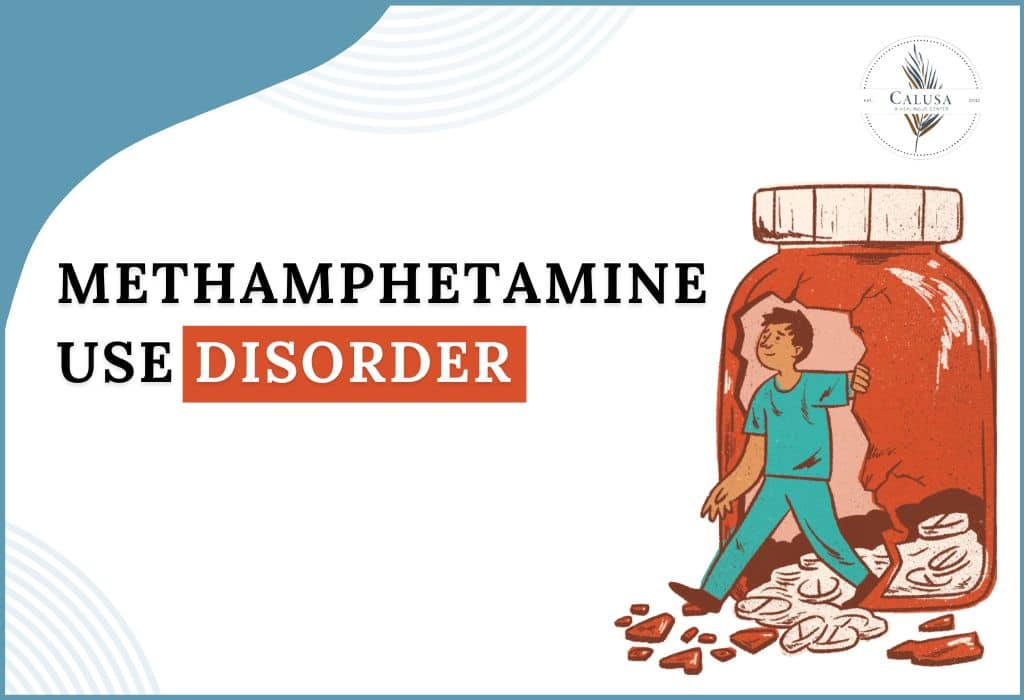Methamphetamine is a highly addictive drug. According to the survey, 1.6 billion individuals are suffering from methamphetamine addiction. In the shadow of substance abuse, methamphetamine is considered a powerful stimulant. It affects certain areas of the brain and the function of the central nervous system. For example, heart rate, respiration, body temperature, and blood pressure rise under meth.
When a person takes meth continuously it develops the feeling to take meth for pleasure and keep the person energetic. However, when a person doesn’t take meth the body begins crashing which leads to a feeling of fatigued, depressed, hungry and anxious. Methamphetamine abuse can result in addiction.
In this article, we will discuss detailed information on methamphetamine use disorder treatment, signs of methamphetamine use, drug tests for methamphetamine, and methamphetamine use disorder.
Drug Test for Methamphetamine
Taking a drug test for methamphetamine is crucial to understanding overdose and finding the right treatment. There are different types of tests, including blood tests, urine tests, fingerstick blood sugar tests, acetaminophen tests, and ECG tests. Healthcare professionals can also check your electrolyte balance and the health of your kidneys and liver. Additionally, they might test for HIV or hepatitis B and C to assess the impact of methamphetamine use.
Another way to test for meth is with a drug test kit. This method is quick and easy, making it useful for parents and employers. A drug test can detect meth within 4 to 6 hours of use. A positive result can show up for 2 to 4 days after taking meth. This means you’ve used the drug in the last 1 to 3 days. If you test positive, you might face consequences like not getting a driver’s license, a job, or being unable to join the military or certain sports.
Methamphetamine use disorder
Methamphetamine is a disease in which excess meth in the blood is secreted, interfering with its ability to effectively transport oxygen. It increases dopamine levels in the brain, leading to euphoria. However, its use develops severe health problems such as addiction, cardiovascular issues, and neurological damage. The reasons people use methamphetamine vary, but it is often connected to seeking pleasure, increased energy, and escape from reality. The negative consequences far outweigh any short-term benefits, making it a dangerous substance.
Adverse Effects of Methamphetamine Use Issue:
Real signs:
- Weight loss
- Unusual sweating
- Vasodilation and circulatory pressure
- Dental issues (often listed as “meth mouth”)
- Changes in brain structure and function
- Malnutrition
Life Signs:
- Life is not stable and becomes toxic after drug use
- Changes in sleep that lead to sleep disorders
- Create confusion or doubt in the mind of a person related to their life.
Mental signs:
- Difficult or aggressive behaviour
- Behavioural fluctuations
- Insomnia
- Anxiety
- Paranoia
- Mood disturbances
Methamphetamine use disorder treatment
Methamphetamine has a significant impact on the nervous system. Addiction is considered a treatable but not curable disease. Understanding the addiction levels helps in beginning the treatment. Methamphetamine use disorder provides different treatment options.
1. Inpatient treatment
54.2% of people choose Inpatient treatment for their methamphetamine addiction. Because this treatment provides a high level of care to the person. The patient lives at the facility receives 24-hour medical support and learns how to live life with the addiction. In this treatment patients are treated with drug testing, individual counseling to understand the mind, behavior therapy and family education to understand the importance of family.
2. Detoxification
Detoxification is the process of getting rid of drugs from the body. The process takes place under the supervision of a healthcare professional so a person can be safe and comfortable during detoxification. The detoxification takes place in three steps. The steps such as evaluation, stabilization and transition into further treatment.
The evaluation is a stage where the doctor assesses the patient’s health. Also, use urine drug tests to determine the amount of Meth that a patient has consumed. From there, the doctor makes a detox plan that fits the patient’s specific needs. In the stabilization stage, the treatment that is implemented in the evaluation by the doctor will check and bring in a stable condition. Once these two processes are complete the doctor plans for other treatment for the patient.
3. Outpatient treatment
It is the treatment where people are allowed to take treatment and live their everyday lives. 46% of the people opt for this treatment. This treatment is good for people who can manage things in less structured environments. Also, it is a flexible and accessible treatment.
4. Aftercare treatment
Aftercare treatment is essential for people to avoid future relapse. The treatment includes community support, family support, mutual-help group support, alumni events, and more.
Signs of methamphetamine use
Methamphetamine is a powerful substance that affects a person in the short term and long term. These Signs of methamphetamine use are observable in patients.
1. Behavioral changes
When a person’s behaviour is changed then the person is going through methamphetamine addiction. If a person is intelligent and thoughtful then they also try to hide their drug use as they care only for taking methamphetamine.
The changes in the behavior can be as follows:
- Going away from family and friends
- Insomnia
- Engage in risky behaviors
- Loss of interest in daily activities
2. Mood swings
When a person’s mood quickly swings then they are methamphetamine abused. The mood swings they face are:
- Hyperactivity
- Paranoia
- anxiety
- Irritability
- Inability to sit proper
- Racing thoughts
- Delusions of power
3. Physical appearance change
Weight gain is typically a sign of methamphetamine addiction. If your loved ones are eating unhealthy foods then it is a high chance of methamphetamine use. The signs of change in physical appearance are as follows:
- facial acne
- intense scratching
- dilated pupils
- rotting teeth
- weight loss
- premature aging of facial skin
4. Tweaking
The occurrence of tweaking is when a person binges continuously to chase the initial high. A person walks in an unsteady manner and has a rapid speech during the tweak. Additionally, they experience insomnia for up to 15 days.
5. Crashing
Extended use of methamphetamine leads to a body experiencing a crash and collapse due to sustained overstimulation. Also, it ends with long periods of sleep where the body is unable to function properly.
6. Paraphernalia
Paraphernalia refers to the item used by the person to take the drugs. The items can be pipes, needles, drinking straws and others. It can be inserted in three forms into the body such as injected, snorted, or smoked. The drug is injected using needles, nasally in the nose using a straw called snoots and the smoking method puts drugs into the bloodstream and brain.
The common Paraphernalia are:
- needles
- syringes
- spoons
- metal or glass pipes
- aluminum foil strips
- drinking straws
- small, plastic baggies
7. Neglecting responsibility for life
The addition of methamphetamine is so strong that people stop thinking of their lives. They stop thinking of their responsibility, family, friends, and jobs. It is one of the cheapest drugs available on the market. The person will have a job and money but they spend their whole money buying these drugs, as a result, they need to borrow money.
If a loved one often borrows money, it is a sign of potential methamphetamine addiction.
FAQs (Frequently Asked Questions)
1. How long does methamphetamine stay in your system?
Methamphetamine can be found in a variety of body fluids, including blood, urine, and sputum. The half-life of the drug is about 10-12 hours, but longer follow-up is possible. Its length depends on such variables as repurposing, individual digestion, and general well-being.
2. Which factor influences the methamphetamine in the system?
The factor that influences the methamphetamine in the system is as follows:
- Digestion: People who digest faster can eliminate methamphetamine even faster
- Repeating the goal: Continuous use leads to a strong accumulation in the body
- Hydration Level: Drinking plenty of water can speed up the elimination process
- General well-being: The liver and kidneys can affect the digestion and elimination of drugs
3. How much time does it take for a drug test of methamphetamine?
Drug tests for methamphetamine can change the window of detection depending on the type of test:
- Urine test: Determines methamphetamine 1-4 days after use.
- Blood test: Can detect the drug for 1-3 days.
- Liquid separation test: Differentiates methamphetamine for 1-2 days.
- Hair follicle testing: Methamphetamine can be differentiated for up to 90 days.
Conclusion
Methamphetamine use creates a difficult condition for persons physically, and mentally. Perceiving the side effects and understanding the variables that impact the life of a person due to methamphetamine use is important for early meditation and treatment. The treatment includes Inpatient treatment, outpatient treatment, detoxification and aftercare treatment. If you or a loved one is struggling with meth addiction, seeking professional help is essential for effective treatment and overall well-being.
We, at Calusa Recovery, understand that people respond differently to each style of mental health treatment, so we’re careful to offer a wide range of modalities so you can find what’s best for you. We offer a variety of methamphetamine withdrawal programs like detoxification, general outpatient treatment, intensive outpatient treatment, mental health treatment, and other relapse prevention treatment options suitable for every client’s needs. You can read about our holistic Crystal Methamphetamine Recovery Program here: https://calusarecovery.com/addiction-treatment/meth/










